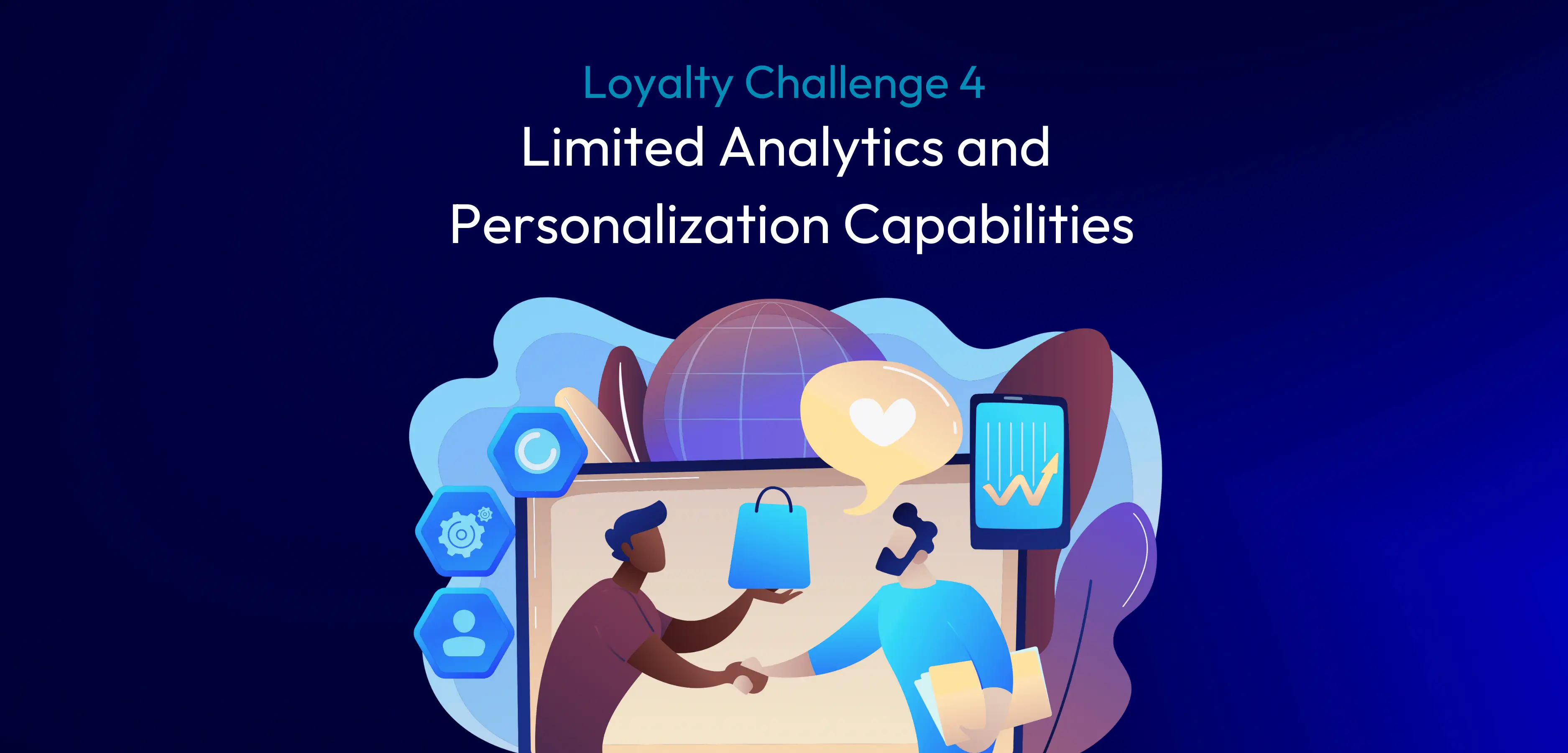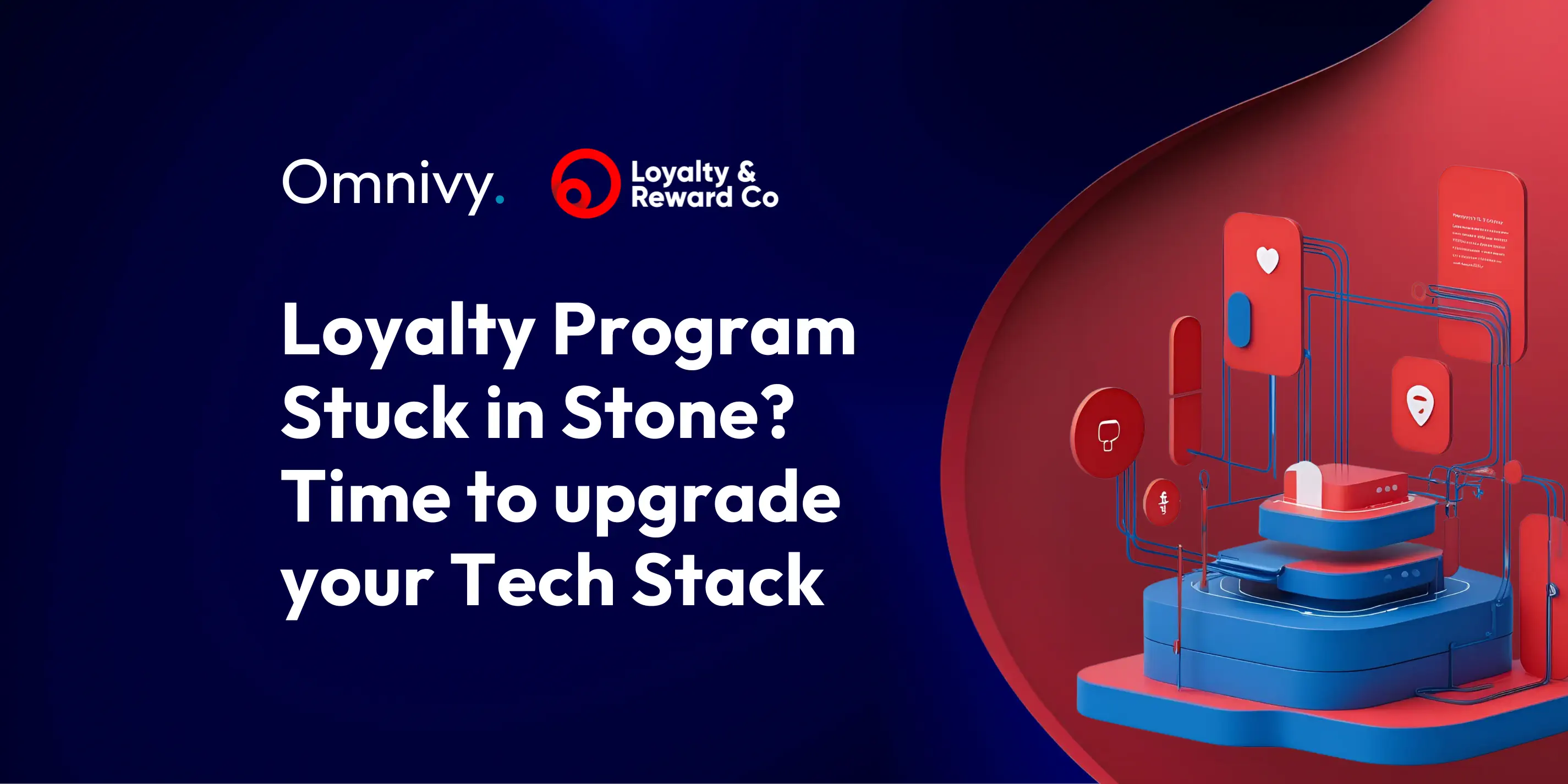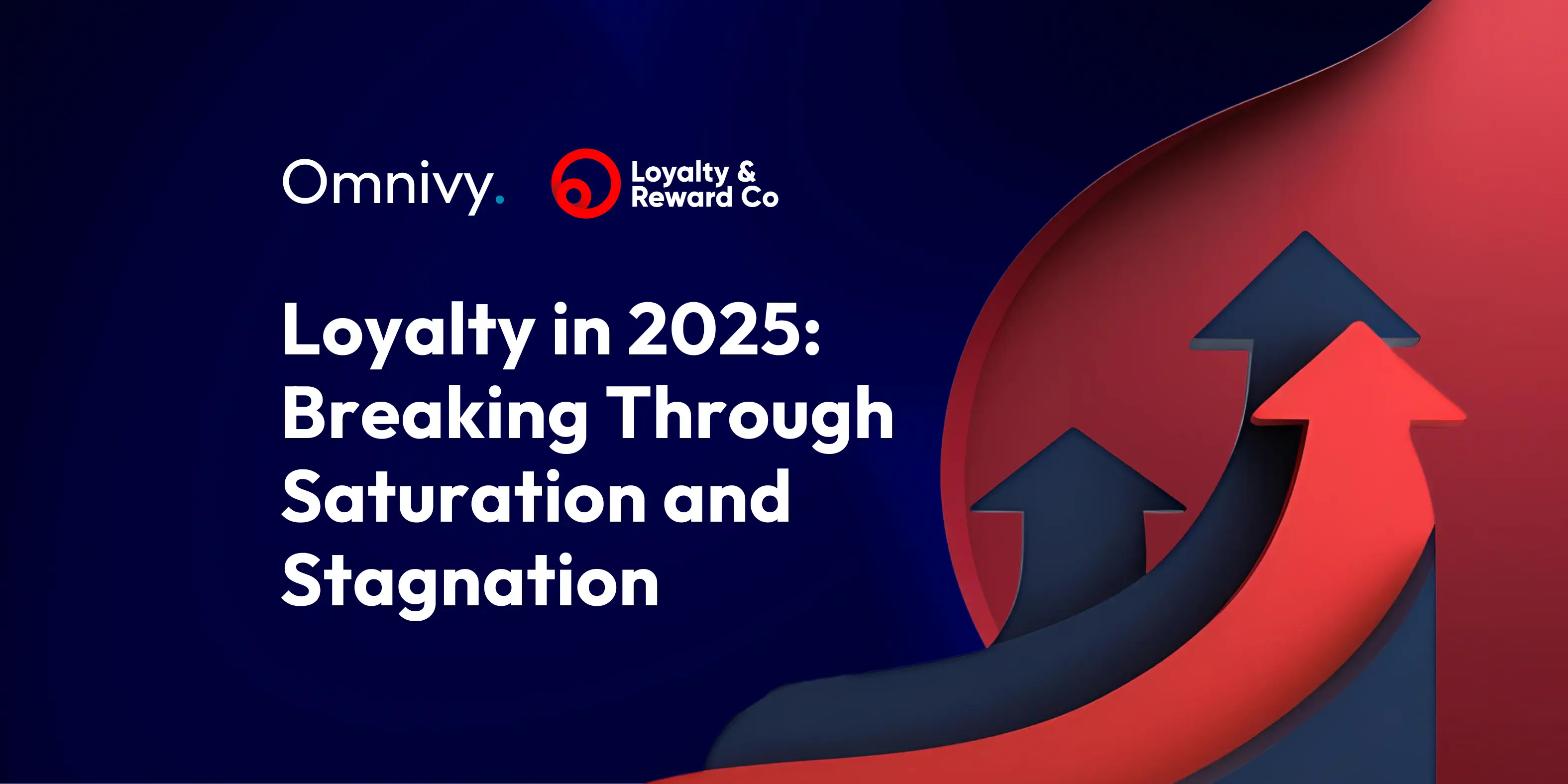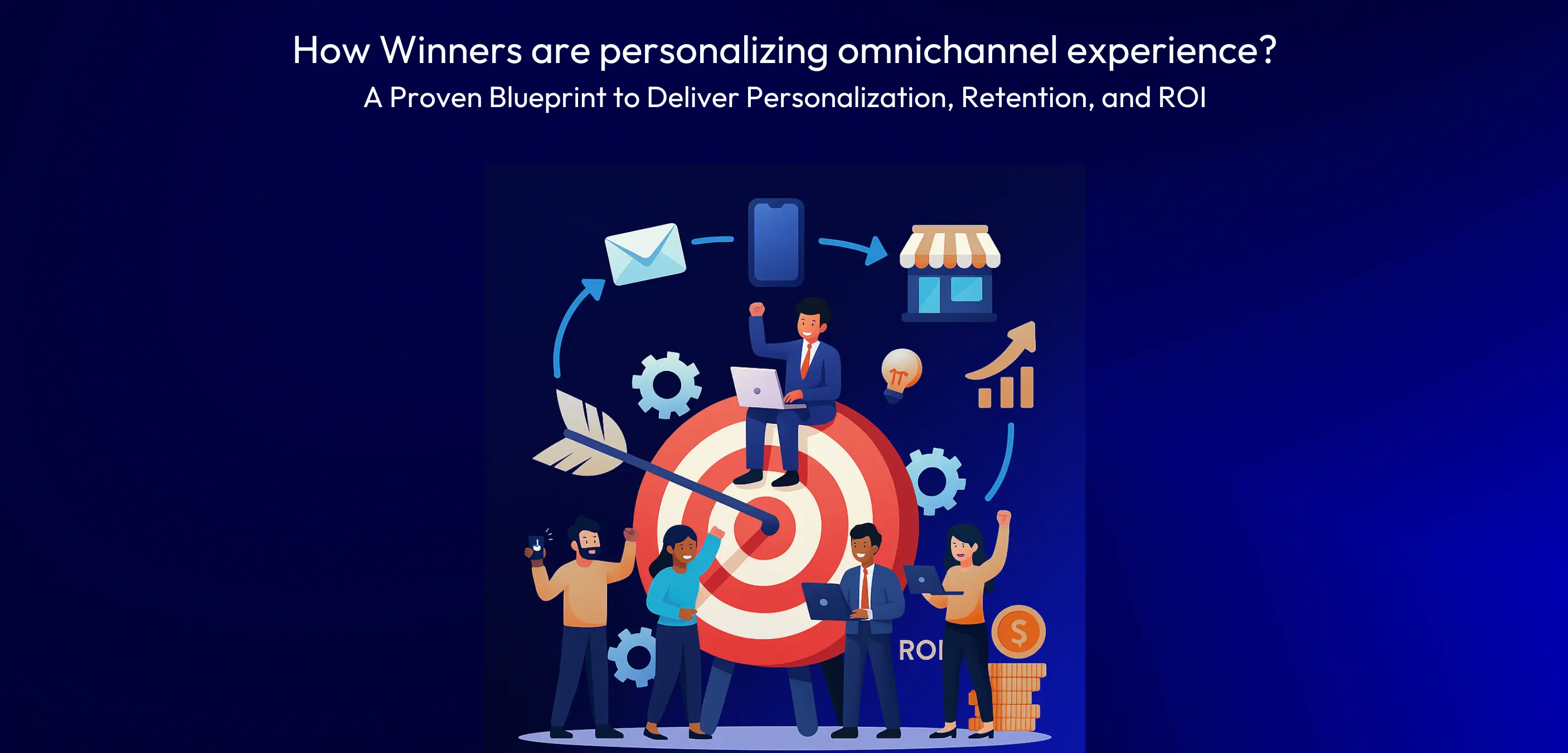Loyalty programs have enormous potential to drive engagement and foster long-term customer relationships. However, many businesses struggle to unlock this potential due to a lack of advanced analytics and personalization tools.
According to the Integrated Loyalty Report 2025 46% of loyalty professionals cite insufficient reporting systems as a major hurdle in evaluating their programs' effectiveness. This gap leaves critical metrics like promotion efficiency, customer lifetime value (CLTV), and redemption rates poorly understood and underutilized.
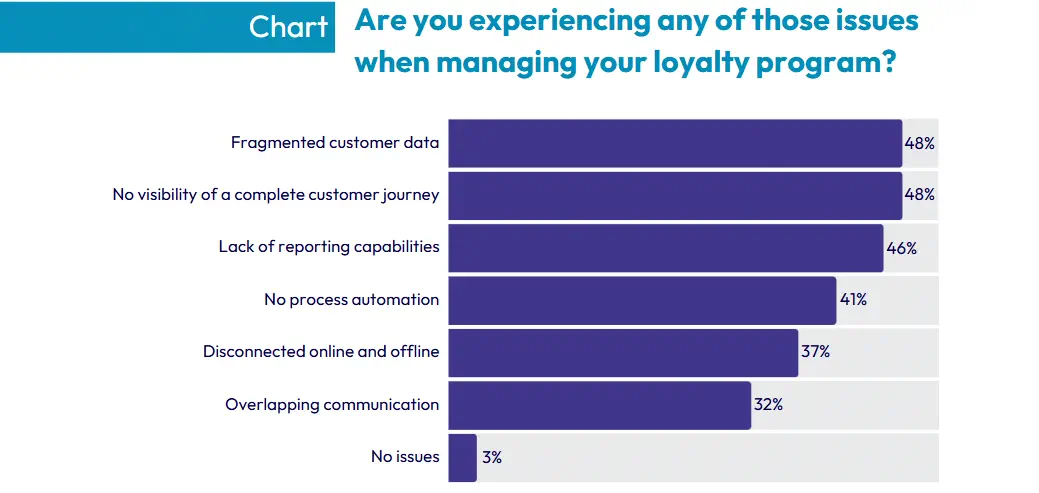
Additionally, integrating loyalty engines with AI-driven personalization systems remains an untapped opportunity for many organizations. The barriers often lie in perceived high costs and setup complexity. As a result, loyalty programs frequently fall short in delivering the data-driven, personalized experiences customers expect. Effective loyalty program integration is essential to overcoming these challenges.
This article is the fourth in a five-part series addressing the top challenges in loyalty program integration and providing actionable solutions. While each post stands alone, the series forms a cohesive guide to help businesses unlock the full potential of their loyalty programs.
Missed the previous articles? Start here:
- Fragmented Customer Data: The Hidden Barrier to Loyalty Integration
- Disconnected Online and Offline Experiences: The Integration Challenge
- Lengthy Integration Timelines
Next in the series: Skills Gaps in Integration Projects.
Limited Analytics and Personalization Capabilities: Overcoming Key Challenges in Loyalty Program Integration
The Challenge: Gaps in Data and Insights
To deliver meaningful value, loyalty analytics must draw from diverse, integrated data sources. However, most loyalty tools rely on isolated program-specific data—such as registrations, points earned and redeemed, or coupon usage. This fragmented approach leaves critical insights untapped.
Loyalty managers often struggle to answer essential questions such as:
- Did the promotion’s success stem from a broader marketing campaign?
- Did a specific discount generate sales uplift compared to baseline figures?
- Did the additional margin offset the promotion’s cost, leading to profitability?
Without connecting loyalty data to broader business systems like CRM, CDP, or marketing automation tools, managers lack the insights needed to make strategic decisions or accurately measure program impact.
Siloed Platforms Hinder Personalization. Modern martech ecosystems complicate personalization by creating overlapping systems—such as marketing automation tools and recommendation engines—that compete for control over the process. This fragmented architecture deepens data silos, making it harder to deliver cohesive, personalized customer experiences.
To achieve seamless omnichannel personalization, businesses must:
- Define which system leads in utilizing AI-driven insights and propagating recommendations.
- Ensure loyalty platforms leverage third-party AI tools for segmentation and promotional recommendations.
- Establish loyalty engines as central hubs for personalized, cohesive customer interactions.
Impact: Diminished Program Effectiveness
The absence of analytics and personalization capabilities affects businesses in two critical ways:
Reduced Adaptability To effectively adapt programs to evolving customer behaviors, loyalty teams need access to predictive insights derived from a wealth of integrated data sources. Isolated loyalty program metrics—such as points earned and redeemed or coupon usage—fail to provide a comprehensive picture. For example, without insights connecting promotions to broader campaigns or baseline sales figures, businesses cannot determine whether a promotion generated profit or loss. This lack of integration leaves loyalty managers struggling to make informed decisions or identify key trends like churn risks and high-value segments, leading to diminished program effectiveness.
Stagnant Customer Engagement Personalization is a cornerstone of modern loyalty programs, yet many businesses fail to leverage AI-powered recommendation engines or third-party tools effectively. Without robust loyalty program integration, loyalty platforms cannot:
- Utilize cross-system data to tailor offers to individual customer preferences.
- Provide seamless real-time rewards or incentives across multiple channels.
These limitations not only reduce customer engagement but also contribute to disconnected customer experiences. In today’s competitive marketplace, businesses must break down silos and unify their loyalty and personalization strategies to maintain relevance and drive sustained growth.
Solution: Connected Data and Dedicated Loyalty Dashboards
To overcome the challenges with loyalty data analytics, businesses should adopt following solutions:
Modern Data Layer Architecture in Loyalty Programs
A robust data layer architecture is essential for modern loyalty programs, enabling marketers to create seamless customer experiences, measure program impact, and drive advanced personalization. At Omnivy, we believe the data layer is the foundation for loyalty marketing success, blending loyalty and CX data with inputs from systems like ERP, transactional channels, and marketing / communication tools.
Key elements of a proper data layer architecture include:
- Customer Data Platforms (CDPs)
This is the "golden record" of customer data, enriched and activated across marketing systems. Marketers can choose between dedicated systems like Segment or mParticle, or embrace the emerging "composable CDP" approach with tools like Hightouch, which enable real-time data enrichment and activation through reverse ETL.
- Centralized Data Stores
Modern data platforms like Snowflake or BigQuery serve as the backbone for storing, blending, and serving organization-wide data. Collaboration between loyalty marketers and data engineers is critical to define data dictionaries and ensure loyalty data flows effectively into these systems.
- Advanced Analytics and AI
With tools like AWS Sagemaker or Dataiku, loyalty teams can unlock predictive insights and optimize customer experiences. However, this space often remains underutilized due to a disconnect between loyalty teams and data scientists—something Omnivy aims to address.
- Data Visualization and BI Tools
Powerful visualization tools like PowerBI or Tableau help demonstrate the ROI of loyalty programs. These tools ensure key stakeholders understand and support the program's strategic value.
This integrated data layer approach ensures that loyalty programs are not siloed but instead act as a central driver of customer-centric business strategies. For more insights into building a modern loyalty data layer, check out our detailed Whitepaper.
Integrate AI-Powered Analytics
Combining loyalty engines with AI-driven analytics tools unlocks actionable insights and drives program performance:
- Predictive Insights: Identify at-risk customers and target them with retention strategies.
- Behavior-Based Segmentation: Tailor offers based on customers' shopping habits and preferences.
- Real-Time Personalization: Deliver instant, context-aware rewards, such as offering a discount as a customer browses your website.
AI transforms raw data into insights, enabling loyalty teams to engage customers in meaningful, personalized ways. Effective loyalty program integration ensures these tools
Conclusion: Data Democratization through shared Data Layer
Modern loyalty program success depends on building a robust data layer that powers analytics and personalization. By integrating AI-driven tools, leveraging centralized data stores, and adopting advanced data visualization systems, businesses can:
- Enrich customer profiles with predictive insights and segmentation.
- Measure loyalty program ROI and connect it to broader business goals.
- Deliver real-time, behavior-driven experiences that resonate with customers.
At Omnivy, we envision a future where loyalty programs act as a central driver of customer-centric strategies, seamlessly integrating with marketing and business systems. Organizations that fail to embrace this shift risk falling behind competitors who prioritize data-driven loyalty solutions.
It’s time to leave outdated approaches behind and invest in innovative, composable architectures that enable personalization and omnichannel excellence. Effective loyalty program integration isn’t just a technical upgrade—it’s a strategic imperative for long-term growth and customer engagement.
